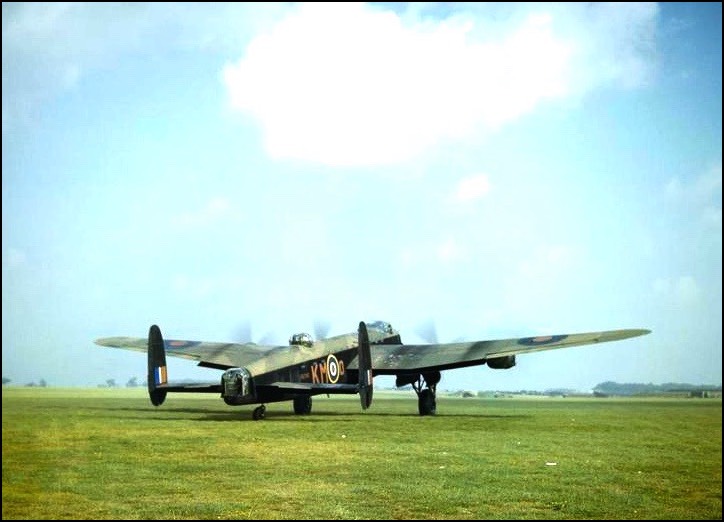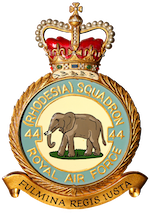A Navigator’s Tale
James Bundle was born on 21st September 1921 at Cosham, Hampshire. On leaving university James was anxious to participate in the war effort, and firstly worked as a civil servant within the Admiralty at Portsmouth, gaining the Inter-BA certificate.
On the 28th May 1941, James decided he wanted to do more for the war effort and volunteered for the RAF, reporting to No 1 Air Crew Reception Centre in Regents Park, London, where he was given the service number 1311521, and his rank of AC2, James was issued with his kit, and slept with other volunteers in the Members Pavilion at Lord’s Cricket Ground for the night. From here he was sent on to a Reception Centre at Oxford, to begin ‘Square Bashing’ along with learning the structure and laws within the RAF. On the 20th August James was sent to No 2 Initial Training Wing at Cambridge, for further training, where he stayed until the 20th November, then joining the No 1 Elementary Air Observers School at Eastbourne in East Sussex, with a new rank of Leading Aircraftsman (LAC).
At the beginning of the New Year in 1942, LAC Bundle boarded a troop ship for a 9 day journey to Halifax in Novia Scotia, Canada, and onward for the next six days by train to No 31 RAF Moncton, to undertake further Pilot/Observer training, starting on 24th February 1942.
On the 18th March James was posted to the USA (under the Arnold Scheme) for more intensive Observer training, flying in Anson aircraft. By the 20th July 1942, James had completed his training, and with a promotion to temporary Sergeant he returned to No 3 Personnel Reception Centre at Bournemouth in the UK. He was now a qualified Observer/Navigator, and given his Observer brevet which he proudly wore.
On the 28th August Sergeant Bundle was sent to No 3 Advanced Flying Unit (Observers) at RAF Halfpenny Green until the 20th November 1942 where he was then attached to No 14 Operational Training Unit (OTU) at RAF Cottesmore. It was here that he teamed up with his other crew members, who would fly with him throughout his war service.
His Canadian pilot, Flying Officer Duncan Moodie, 26 years, (who was born in Hong Kong and enlisted at Vancouver on 22.8.41), Sergeant Norman Clausen, his Danish Bomb Aimer from Svenborg, (whose parents were part of the Resistance and had been captured and killed by the Gestapo), Sergeant Les Melbourne, the Flight Engineer, and oldest at 31, Sergeant Tom ‘Geordie’ Stamp, the small shy wireless operator from a village near Newcastle Upon Tyne, Sergeant Len Drummond, the Mid Upper Gunner, whose parents ran a pub near Burton on Trent, and the rear gunner Arthur Hughes, who at 19 years was the youngest.
The crew were sent to No 1651 Heavy Conversion Unit at RAF Waterbeach on the 19th January 1943 for a months training and then onto No 1660 Heavy Conversion Unit at RAF Swinderby. By the 10th March 1943, the crew were ready to be posted to an operational squadron, No 44 (Rhodesia) based at RAF Waddington, the first squadron in Bomber Command to be equipped with the new four engined Lancaster.
Flying Officer Moodies crew were to complete 18 ops with 44 Squadron, in Lancaster W4268
Q -Queenie.
22nd March 1943 - U Boat Pens St Nazaire (Wg Cdr Nettleton VC led the raid)
27th March 1943 - Berlin (DNCO fractured oxygen pipe to Wireless Operator)
29th March 1943 - Berlin (Port inner engine stopped, exceptional navigation noted)
3rd April 1943 - Essen
8th April 1943 - Duisberg
10th April 1943 - Frankfurt
13th April 1943 - Spezia (small flak holes along fuselage)
14th April 1943 - Stuttgart (attacked by Me110, bombs jettisoned)
16th April 1943 - Pilsen (bullet holes in port wing and along fuselage)
28th April 1943 - Jasmine (laying mines along French coast, light flak, damage to fuselage and rudder controls)
4th May 1943 - Dortmund
12th May 1943 - Duisberg (intercom failure and port inner engine u/s - DNCO}
13th May 1943 - Pilsen (Wg Cdr Nettleton VC led this raid)
23rd May 1943 - Dortmund
27th May 1943 - Essen
29th May 1943 - Wuppertal
11th June1943 - Dusseldorf
20th June 1943 - Friedrichhaven (last ‘op’ with 44 Squadron)
Their fate was sealed in a strange way following the operation to Friedrichshafen on the 20th June 1943. They were among 60 Lancasters to attack the old Zeppelin factory converted to making Wurzburg radar sets, and located deep into southern Germany, making it a long and dangerous trip. It was decided that instead of flying back over France in daylight, the aircraft would land at Maison Blanc in Algiers, crossing over Switzerland and Italy en route. After four days having their engines overhauled, the crews started their journey home, some of them bombing La Spezia en route. Q - Queenie had to land at Gibraltar for 2 hours because of further engine problems, after which they continued for another 8 hours 40 minutes landing at Dunholme Lodge around 7 am. Here they were met by Wg Cdr Nettleton VC, who informed them they were on further ‘ops’ that night. Flying Officer Moodie took exception to this, after their two long journeys, and requested some leave for the crew. Wg Cdr Nettleton VC replied, “In that case, after your leave, you and your crew are posted to the Pathfinders” and strode off.
Simon Muggleton

